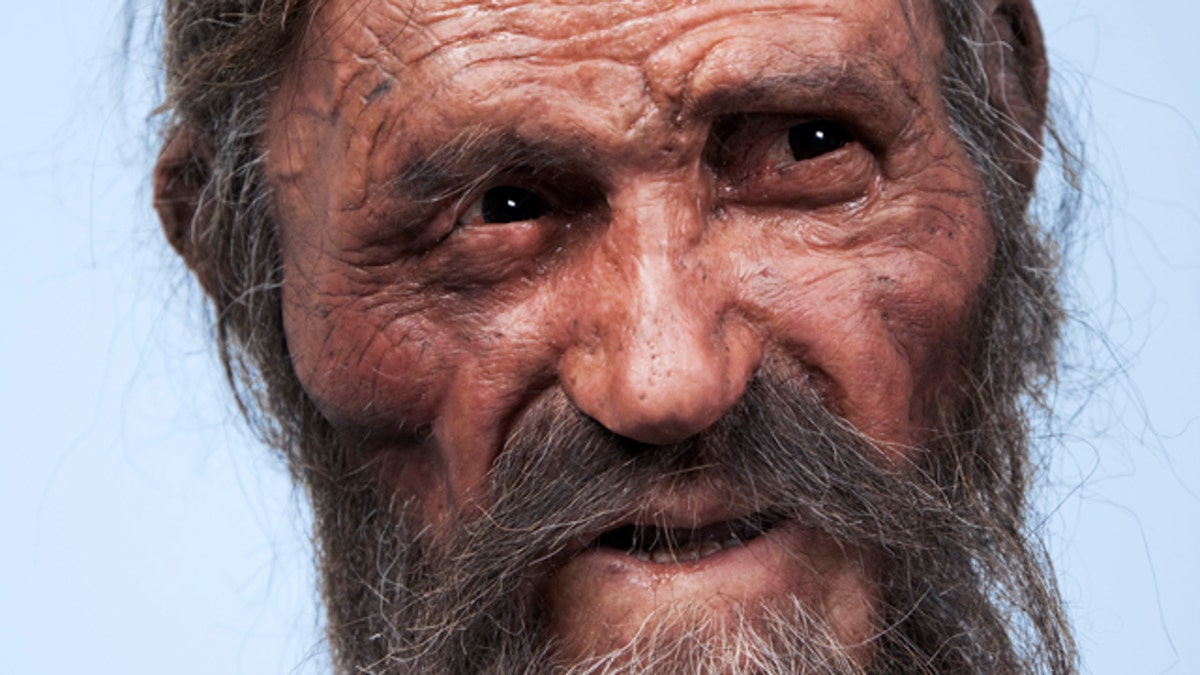
A reconstruction of Otzi the Iceman -- a remarkably well preserved 5,300-year-old mummy sometimes lovingly called "Frozen Frit" -- recently created by Dutch forensic experts. (Heike Engel-21Lux / Sdtiroler Archologiemuseum / National Geographic Deutschland)
Take a good look at this face: It hasn't been seen in over five millennia.
in the year 3289 BC, Otzi trekked up the Schnalstal glacier in the Italian Alps. The Neolithic guy -- dubbed Otzi the Iceman, or "Frozen Fritz" -- wore a coat and leggings made of sheep's fur and moccasins made of cattle leather as he climbed, having just polished off his last meal: unleavened bread and meat.
Severely wounded by an arrow and possibly dispatched with a blow to the head by a cudgel, he died, his body froze and was mummified, and he lay in place for a very, very long time.
Erika Simon was on vacation in the Italian Alpine province of Bolzano in 1991 with her husband Helmut, when they stumbled across the corpse in its astonishing state of preservation (she earned over $200,000 for finding what would turn out to be the world's oldest ice mummy).
Now, 5,300 years later two Dutch forensic experts Alfons and Adrie Kennis have painstakingly created the first image of Otzi, relying on 3D images of the mummy's skull and infrared and tomographic images, Discovery News said.
Their reconstruction reveals Otzi to be an older man, with deep wrinkles in his face and shaggy, unkempt hair parted on the side. His sunken cheeks and deep-set eyes make him appear tired, and older than scientists believe him to have been at the age of his death -- just 45 years old, they think.
According to Discovery News, Otzi was about 1.60 meters (5 foot, 3 inches) tall and weighed 50 kilograms (110 pounds). The new model of him will go on display beginning March 1 to Jan. 15, 2012, at the South Tyrol Museum of Archaeology in Bolzano, Italy.
The body of the Iceman was discovered in 1991 by accident by German tourists and made headlines around the world.
At first he was thought to have died recently. Since then, the ancient mummy has undergone a slew of examinations from which scientists have gleaned bits of information about the man’s last steps on Earth, ranging from his last meal to the cause of death.
